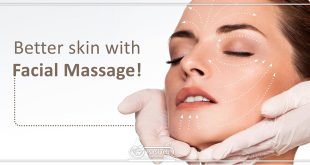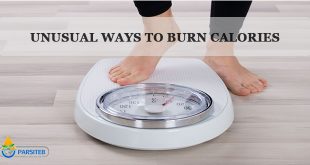Orthopedic Massage vs. Medical Massage: Are We Using the Correct Terminology?
By James Waslaski
Several weeks ago, after discussing my mother’s “medical” condition with her surgeon, I realized how vital it is for our profession to establish the differences between medical and orthopedic massage.
My mother had a critical medical condition called a dissecting aortic aneurysm, in which she exhibited low back pain symptoms, similar to someone with a tight iliopsoas. The medical doctor expected kidney problems, but – through divine intervention – an MRI discovered the massive aneurysm near the bifurcation of the femoral arteries, and it was ready to burst. I thank God each day that she did not go to someone minimally trained in medical or orthopedic massage, because an attempt to release her iliopsoas would have ruptured the aneurysm, and she likely would have died on the massage table.
However, a year prior to discovering the aneurysm, my mother had an “orthopedic” condition called iliotibial band friction syndrome that presented as lateral right-knee pain; through the release of the gluteus maximus, the TFL, and other tight muscles around the knee, surgery was avoided, and she is pain-free one year later, thanks to proper stretching techniques.
Iliopsoas Release Technique: This can place pressure on the abdominal aorta and iliac (femoral) arteries. Orthopedic massage involves therapeutic assessment, manipulation and movement of locomotor soft tissue to reduce pain and dysfunction. Restoring structural balance throughout the body allows us to focus on both prevention and rehabilitation of musculoskeletal dysfunctions. I hope for this to be one of many articles on the differences between orthopedic and medical massage so that there is more consistency within the profession on the use of the terms. It is my strong opinion that misusing the term “medical massage” will build a wall between massage therapists and other health care professionals who spend many years studying medical conditions that are quite different from orthopedic conditions. After spending almost 20 years in a trauma center, I have seen thousands of medical and orthopedic conditions. As massage therapists, there are several potential dilemmas we face when we claim to perform medical massage. For example:
A client presents in your clinic with left shoulder pain. Have you been trained well enough in your “medical massage” classes to know that if your client is sweating profusely, or experiencing mild shortness of breath or an irregular pulse, he or she could actually be having a heart attack?
Is the client you are treating for thoracic outlet because he or she presented with left-sided weakness actually having a mild stroke?
Does the type of cancer your client has tend to spread with the massage modality you are trained to use?
Is the pain in your client’s right leg following his or her surgery actually a blood clot? As you attempt to eliminate that “pain,” are you instead releasing the clot into the lungs or brain, which can cause a massive stroke or pulmonary edema? The list of potential medical complications goes on and on.
I am concerned about organizations that claim to “certify” massage therapists in medical massage in as few as three days. Doctors – especially chiropractors – frequently ask me how a massage therapist with as little as 300-500 hours of training can become certified in assessing and treating medical conditions in one weekend. I tell them that many educators and therapists in our industry misuse the term “medical massage” because it is the current “buzz word.” In other words, it sells seminars and sounds very clinical when used in practice and on business cards. But there are longer, more comprehensive massage programs out there that train students in medical settings and discuss the signs and symptoms of various medical conditions, and if you are already trained as a nurse, doctor, or in another medical specialty, you can see the big picture much more clearly.
In my opinion, orthopedic massage is much more appropriate when we are treating musculoskeletal pain conditions or sports injuries. Its objectives are to restore structural balance in the muscle groups throughout the body, and decompress arthritic or painful joints. Muscle groups shorten, due to prolonged poor posture or repetitive motions, and shortened muscle groups need to be stretched out or they will pull bones onto nerves and blood vessels, and cause or contribute to all sorts of orthopedic conditions. I believe that conditions like joint arthritis are symptoms that result from tight muscles around a joint; thus, thoracic outlet and carpal tunnel syndrome are actually orthopedic conditions.
In thoracic outlet, our goal is to lengthen short muscle groups, such as the anterior and posterior scalenes, the pectoralis minor, and any supporting muscles that compress nerves in the neck and shoulder and cause weakness and radiating pain into the arm or hand. Carpal tunnel can often be effectively treated by lengthening the pronator teres and the flexors of the wrist, and assuring the carpal bones are in alignment. Achilles tendonitis would be best addressed by lengthening the gastrocnemius and soleus muscles. In my opinion, it is truly orthopedic massage when we work to restore range-of-motion, balance out muscle groups surrounding the joints to treat pain, and work to prevent and rehabilitate injuries that involve muscles, bones, tendons and ligaments. Orthopedic massage is also great for performance enhancement.
However, medical conditions can mask and/or complicate orthopedic conditions. For example, a woman in her third trimester of pregnancy may have excessive swelling in her wrists, adding to the tight muscles and tendons in the wrist area requiring medical assistance, perhaps also requiring the use of a diuretic (if not contraindicated) or lymphatic drainage to reduce inflammation. There are functional assessment tests that can determine most orthopedic conditions and outline a treatment plan using multiple modalities. These assessment skills better align you with other orthopedic experts, including orthopedic surgeons, chiropractors, physical therapists and osteopaths.
I also believe that combining multiple disciplines allows better results. One patient may respond better to CranioSacral Therapy, while another requires lymphatic drainage, and the next needs a combination of myofascial release, neuromuscular therapy and stretching. (I will touch more on a multidisciplinary approach in a future article.) Lastly, patients need to be actively involved in their own treatment by perhaps changing the ergonomics of the work environment, watching their posture, using good body mechanics, and doing specific stretches and exercises between treatments.
I would briefly like to address one other concern about the current state of the massage profession. I came from Florida and trained with many of the leaders in our industry. I also took college courses in pathology, biomechanics, anatomy and physiology, then took years of workshops to prevent “tunnel vision” into any one discipline from occurring. In Florida, the base training starts at 500-600 hours and becomes more advanced.
In Texas (where I now live), a person can be a practicing and certified massage therapist with 300 hours. I recently attended a great insurance billing seminar here in Texas; what frustrated me, however, was that many of the attendees had only 300 hours of training. Even if these therapists learned to use the insurance billing codes properly, it is unlikely that after only 300 hours of training, they could ethically support their treatment and billing claims without additional training. I also see claims to “certify” these therapists in medical massage without administering a written and practical exam. No wonder the medical community looks down on us!
I hope I have put a bit of fear into massage therapists that may still have a long way to go to understand that all medical conditions do not fall under plain and simple treatment protocols learned in a basic medical massage training program. As a profession, I suggest we work to distinguish medical conditions from orthopedic conditions to better align ourselves with other medical experts.
I look forward to seeing how the National Certification Board for Therapeutic Massage and Bodywork defines an advanced-level therapist, once it moves to a higher level of certification, and is confident that the process includes a large panel of experts in role delineation and item-writing processes. I also hope that more schools and educators can agree on whether we should call our work clinical massage, orthopedic massage or simply an all-inclusive term like medical massage.
 Parsi Teb Physical and Mental Health Journal
Parsi Teb Physical and Mental Health Journal 



